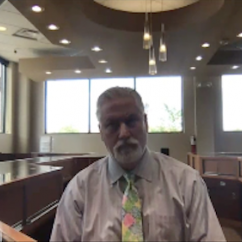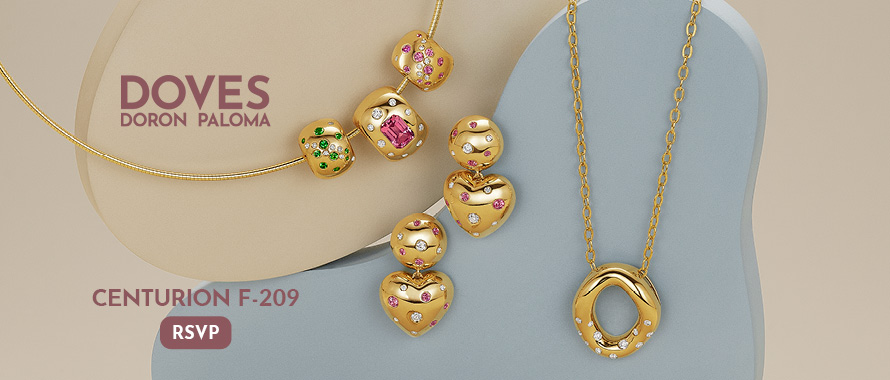Sales Strategy
Getting Back To Normal: Sales Tips From Retailers And Vendors | August 19, 2020 (0 comments)

Merrick, NY—In some ways, the pandemic quarantine has been surprisingly good for jewelry. Although hard on the industry itself—tradeshows and meetings canceled, jewelry stores closed for weeks, and sales representatives that can’t get out to see customers—as a product category fine jewelry has been resilient. Enough data has been collected now to see that fine jewelry is capturing dollars that would previously have gone to travel and experiences, and giving consumers both a way to express gratitude and appreciation to loved ones and a way to look their best in the world of videoconferencing.
The Centurion recently presented a webinar of tips for jewelers to navigate this new selling landscape and gear their businesses up to take advantage of consumers’ newfound desire for something of lasting value. The first session of “Jewelers Gearing Back Up” featured Asaf Herskovits, CEO, GN Diamond, Philadelphia, PA; Tom Heyman, principal, Oscar Heyman, New York, NY; Rob Simon, principal, Windsor Jewelers, Winston-Salem and Charlotte, NC; and Scott Weisman, principal, Meyers Jewelers, Grove City, OH. Centurion president Howard Hauben moderated.
Here are some of the key things that retailers and vendors have done to reopen and grow business in the “new normal.”
Scott Weisman: We’ve thoroughly deep cleaned the store, and come up with ideas to keep it safe for not only staff but customers. We have gloves and masks and hand sanitizer for staff and customers, we put up portable glass safety shields all around the store, and we have 20-some of those that can be moved as needed. Our checkout desk is fully glassed and shielded in now, so that provides a little bit of peace of mind to our staff.
Rob Simon: We have not done the barricades that Scott mentioned, but we have a good supply of sanitizers, notes on the door, and a bar area where people can wash. The first thing we’re trying to do is build back confidence.
There have been a lot of silver linings. We’ve done a lot of videoconferences, a lot of telephone conferences, we did a video trunk show with Charles Krypell from his home, and a lot of different things to stay in touch with clients and let them know that we’re not just here when we’re putting our hands out asking for sales.
Howard Hauben: What’s it like to sell in a world of protective equipment?
Weisman:It’s a pain in the a**. Our business is really personable. The first thing we do when a customer comes in is shake hands or hug, so it’s something to get used to. Right now, my brother is working with a couple getting engaged and he’s standing behind a glass shield wearing a mask and gloves. My dad, may he rest in peace, would be having a hysterical attack watching what’s going on. But I think it’s the new norm, and I don’t think it’s going away for a while.
Hauben: Tell us about virtual trunk shows. I understand quite a few customers can show up to one.
Simon: We’ve had some better than others. I give kudos to folks on our team that came in and cleaned things up and did these virtual video social hours [while we were closed]. Sometimes they did three and four in a day, and we had sales in each one. Not tons of sales—we’re not big on e-commerce—but we have had sales and I think everybody has been forced to change their comfort level with things. Areas that were tolerated before are now becoming necessities.
Hauben: How do you make that emotional connection that’s so important to selling jewelry?
Weisman:It’s tough in a mask. At some point, you pull the mask down and make that eye contact and you figure it out. I’m not the best at technology, but the technology we get through certain vendors—Asaf, for example—it’s amazing what we can show on our cellphone. It’s bigger now because you can’t touch and feel the consumer. It’s got to be a strong partnership between you and your vendors.
Hauben: How are vendors responding to the new needs in this time?
Tom Heyman: We deep cleaned and put up Plexiglas partitions [in our atelier] but we already have pretty good spacing and distancing. We’ve worked on Zoom training sessions that we’ve done with different stores. We have access to all our videos and customer records, so if Rob calls me up about a client, I can look that up.
We are preparing to support stores in an age that’s more digital. And because of my own background—I worked for IBM for five years before joining the family business—I’m technically comfortable. From my cellphone, I can bring up a video or high-res of almost every piece in our inventory or anything Rob has bought in the last 30 years.
So when stores need something great to email to customers because the client only wants to come in once to conclude the sale and do the preliminary work remotely, we can do that.
Asaf Herskovits: We talk to retailers on a daily basis. We focus on listening and trying to help with easy-to-use turnkey solutions to make more sales.
People were really into training and webinars [during the shutdowns]. We’ve also been doing from 15-20 trainings a day on easy-to-use turnkey solutions. For example, how to distinguish why one diamond outshines another. It’s about de-commoditizing diamonds: not just a report card, but when you’re able to show all the reasons why to buy from you instead of another competitor, the consumer stops negotiating. [The retailer’s] closing percentage and cash flow goes up.
Simon: Everybody needs to realize that during this time, special occasions and love are not quarantined. It’s just us that are quarantined. We’re in a luxury business so even if you’re putting on that mask or gloves, the bottom line still is that someone had a reason to come in. You have to go back to the roots of why and provide compelling customer service.






